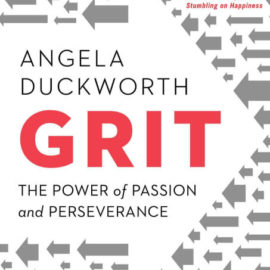Want to learn the ideas in The Plant Paradox better than ever? Read the world’s #1 book summary of The Plant Paradox by Steven R. Gundry here.
Read a brief 1-Page Summary or watch video summaries curated by our expert team. Note: this book guide is not affiliated with or endorsed by the publisher or author, and we always encourage you to purchase and read the full book.
Video Summaries of The Plant Paradox
We’ve scoured the Internet for the very best videos on The Plant Paradox, from high-quality videos summaries to interviews or commentary by Steven R. Gundry.
1-Page Summary of The Plant Paradox
Overview
You wouldn’t want to eat your yoga mat for dinner, would you? So why are you eating at McDonald’s or any other fast food restaurant? The food at these restaurants contains a substance that is also found in your exercise mat: Azodicarbonamide. It makes the gluten in bread more immediately available to your digestive system and irritates it. Therefore, remember to keep on walking when you come across another McDonald’s.
Chia seeds, quinoa, açai berries, goji berries and kale are all super foods that have become popular in recent years. People eat them because they’re healthy. However, some of these foods can cause weight gain and damage our health. Lectins are proteins found in plant-based foods such as legumes and grains that can do us more harm than good. Taking the key points back to the past shows how fruits and vegetables used to be healthier before lectins were introduced into their diet by humans thousands of years ago through farming practices. The Plant Paradox Program explains which plant-based foods should be avoided while introducing you to two diets: one for eating healthy food; the other for eating unhealthy food with lectins but not causing any weight gain or health problems (if followed properly).
You’ll also learn the similarities between a human digestive system and a nuclear power plant, as well as why you should avoid legumes. You’ll also learn about green smoothies, which are healthy and help cleanse your body.
Big Idea #1: Plant proteins cause confusion and weight gain.
If you’ve ever seen a wildlife documentary, you’ll know that animals don’t just sit around and wait for other animals to eat them. Instead, they develop defenses like long legs so they can run away from predators. But what about plants? If you have always assumed that plants are any more willing to become your next meal, think again.
Plants also have weapons against predators. They’re called lectins, and they exist in leaves, seeds, skins and grains.
When lectins are consumed, they bind to sugar molecules in the animal’s brain and nerve endings. This results in a lack of communication between your nerves and cells, which leads to brain fog.
Plants produce lectins in order to teach predators that they should avoid eating them. Lectins cause confusion and also cause you to gain weight.
One type of lectin that causes weight gain is wheat germ agglutinin (WGA). Found in wheat, this plant protein enters our body’s fat cells and transforms sugar into fat.
In fact, the reason why wheat was originally favored by northern people is because of its fat-producing properties. It helped them gain weight and survive when food was scarce.
In the past, humans needed to consume lots of plants in order to survive. Nowadays, however, with so many food options and central heating systems available for warmth, people aren’t as concerned about consuming large amounts of plants.
Big Idea #2: Lectins have been shown to be harmful, but they’ve also helped humans in the past.
In the previous section, we learned that lectins are bad for us. However, it’s important to understand why they’re in our diets in the first place. It turns out that our ancestors had little choice but to eat them because there were few other options available at the time.
The human diet was primarily protein-based for most of our evolutionary history. This changed around ten thousand years ago when a lot of the animals died due to climate change. As a result, humans had to find another food source.
People started eating foods from plants, such as grains and beans. This saved them from starvation. However, because of new food sources, people became sick with illnesses they never had before.






